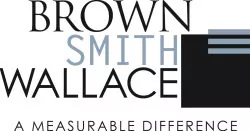Companies that lease valuable assets — such as aircraft, real estate and heavy equipment — will soon have to recognize on their balance sheets the assets and liabilities generated by contracts longer than a year under Accounting Standards Update (ASU) No. 2016-02, Leases (Topic 842).
For a major retailer, airline or bank that leases significant assets, this change could cause billions of dollars of operating leases to appear on its balance sheet. The update also requires companies to disclose more information about leases in the footnotes to their financial statements.
Ushering in a new era in lease accounting
Today, lessees account for all of the payments on their operating leases on their income statements, but they don't account for future obligations on their balance sheets. Under the new standard, operating leases will move to the face of the balance sheet, rather than simply being disclosed in financial statement footnotes.
"The new guidance responds to requests from investors and other financial statement users for a more faithful representation of an organization's leasing activities," Financial Accounting Standards Board (FASB) Chairman Russell Golden said in a statement. "It ends what the U.S. Securities and Exchange Commission and other stakeholders have identified as one of the largest forms of off-balance sheet accounting, while requiring more disclosures related to leasing transactions."
The FASB finalized this controversial standard on February 25, 2016, after working on it for more than a decade. The amendments leave the accounting for lessors (the organizations that own the assets being leased) largely intact, although there are some changes intended to align lessor accounting with the FASB's landmark revenue recognition standard.
Public companies will have to begin applying the new leasing standard for fiscal years and quarters that start after December 15, 2018. Private companies will have to apply it for fiscal years that start after December 15, 2019. They'll also get an extra year to apply the changes for interim periods. Early adoption is permitted.
Adding more stress to financial reporting systems
Financial reporting staffs at U.S. companies now find themselves in the unwelcome position of undertaking what's expected to become three major standards implementation projects on overlapping schedules.
ASU 2016-02 was released two years after ASU No. 2014-09, Revenue from Contracts with Customers (Topic 606). The revenue recognition standard is scheduled to become effective for publicly traded companies in 2018, just a year before the lease standard goes into effect. (Private companies have an extra year to implement the changes for both standards.)
By mid-2016, the FASB is expected to publish another major standard that will amend its guidance for writing down bad loans and securities. In November, the board decided to give the credit loss standard a 2019 effective date for public companies (the same timing as the lease standard).
The net result will be a major amount of stress on company controllers, their financial reporting teams and corporate reporting systems in the coming years.
Providing support during implementation
The FASB has created the Transition Resource Group (TRG) to consider questions companies and auditors raised about the new revenue accounting. But the board hasn't yet determined the amount of outreach it will provide to help companies and auditors during the phase-in of the new lease standard.
Nothing of the TRG's magnitude is planned for the lease standard at this stage, but the FASB is gauging the public response to see how much assistance it should provide. Compared with the updated revenue recognition guidance, the changes to lease accounting will be relatively minor in scope and permit the use of many established policies and systems already in place.
The lease accounting project has been the subject of intense public scrutiny and much opposition from businesses. But now that the rules have been finalized, most critics have fallen into line. Some concerns remain, however, about the adverse impacts on debt financing and about the compliance costs, especially for private companies.
Finding the silver lining
The upside is that the new lease standard will encourage companies to centralize control over leases. When different locations or business segments make independent leasing decisions, a company's lease portfolio starts to look like a patchwork quilt. A more targeted, centralized approach often leads to more efficient and consistent leasing decisions.
The first step is for companies to identify existing contracts, which could number in the thousands for large retailers, restaurant chains and other publicly traded lessees. Then management needs to decide which contracts qualify as lease agreements. Some contracts (or portions thereof) may qualify as service agreements, which are outside the scope of ASU 2016-02.
Once a company has cataloged its agreements, management can evaluate the terms of the leases. Ultimately, management should look at each leasing arrangement to determine whether it: 1) continues to make good business sense, 2) should be renegotiated for a shorter duration or with more favorable terms, or 3) should be terminated so the company can purchase the same asset (or a similar asset) outright.
For continued or renegotiated leases, the company will need to start tracking the requisite information to implement the new accounting standard. For many lessees, the compliance costs, combined with low interest rates and the availability of bank financing, could tip the scales in favor of buying, rather than leasing, assets. For others, however, leasing will continue to be a prudent option.
Getting help
Love it or hate it, the controversial new lease standard is here to stay. Although public companies still have three years to work out the details — and private companies have four years — financial reporting staffs already may be stretched thin as they deal with the revenue recognition and credit loss guidance.
The content of this article is intended to provide a general guide to the subject matter. Specialist advice should be sought about your specific circumstances.

